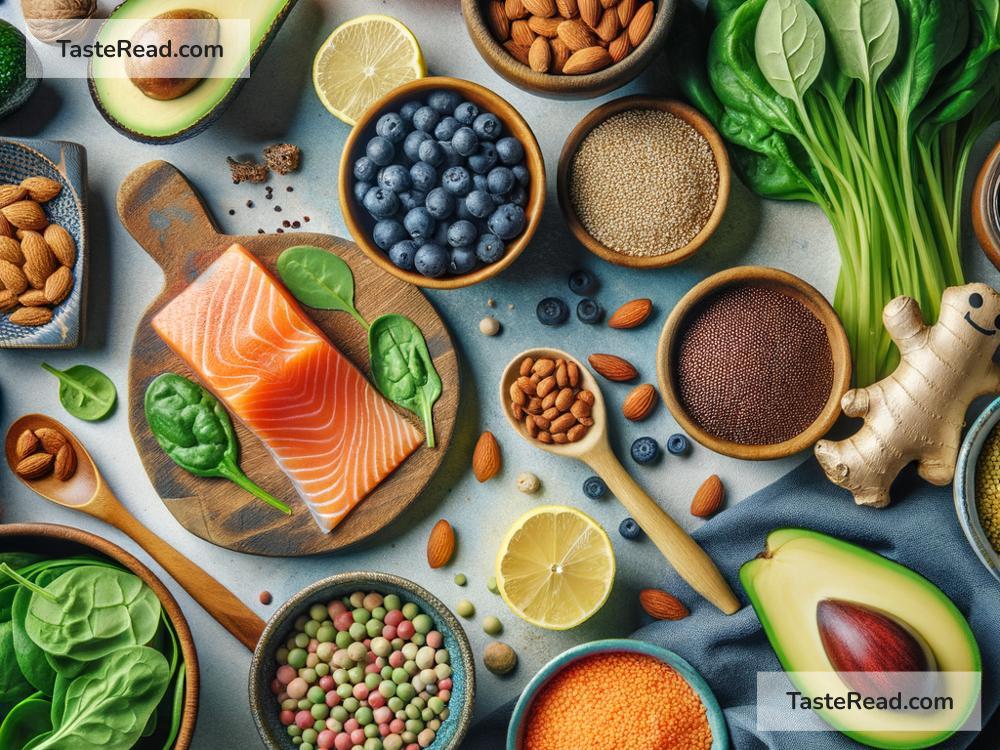Foods That Reduce the Risk of Hormonal Migraines
Migraines are painful headaches that can disrupt daily life. For some people, migraines are triggered by hormonal changes, such as fluctuations in estrogen levels. These are often referred to as hormonal migraines and are especially common in women during their menstrual cycle, pregnancy, menopause, or when on certain medications like birth control. While hormonal migraines can be challenging to manage, the foods we eat can play a big role in reducing their frequency and intensity. Let’s explore how diet can help lessen hormonal migraines and learn about specific foods that may bring relief.
How Hormones Affect Migraines
Hormonal migraines are closely tied to drops in levels of estrogen, a key female hormone. When estrogen fluctuates, it can impact the chemicals in the brain, especially those related to pain sensation. For instance, a sudden decrease in estrogen can lead to increased sensitivity in the brain’s blood vessels, triggering a migraine.
In addition to managing stress and proper hydration, eating certain foods and avoiding known triggers can help stabilize hormones and minimize migraines.
Foods That Help Reduce Hormonal Migraines
- Magnesium-Rich Foods
Magnesium is a mineral that plays a critical role in calming the nervous system and regulating muscle function. It’s been shown to help prevent migraines by reducing tension in the blood vessels. Many people who get migraines are found to have low magnesium levels, so including magnesium-rich foods in your diet may help.
Best Sources: Nuts like almonds and cashews, seeds (e.g., sunflower, chia, and pumpkin seeds), dark leafy greens such as spinach and kale, avocados, and bananas.
- Omega-3 Fatty Acids
Omega-3 fatty acids are healthy fats known for their anti-inflammatory properties. Inflammation in the brain or blood vessels can trigger migraines, and omega-3s help reduce this inflammation. These fats also promote hormone balance, which is particularly helpful for people dealing with hormonal shifts.
Best Sources: Fatty fish like salmon, mackerel, and sardines; walnuts; flaxseeds; chia seeds; and plant-based oils like flaxseed and olive oil.
- Vitamin D-Rich Foods
Many people are deficient in vitamin D, which can affect hormone health and increase the risk of migraines. Vitamin D plays a role in maintaining healthy brain function and reducing inflammation.
Best Sources: Fatty fish like tuna and salmon, egg yolks, mushrooms, fortified milk, and cereals. Spending time in sunlight also boosts vitamin D production in the body.
- Phytoestrogens
Phytoestrogens are plant compounds that mimic the effects of estrogen in the body. Including phytoestrogen-rich foods in your diet can help stabilize estrogen levels and reduce hormonal migraine risk.
Best Sources: Soy products like tofu, edamame, and soy milk; flaxseeds; sesame seeds; and chickpeas.
- Complex Carbohydrates
Blood sugar levels play a big role in stabilizing hormones. Consuming complex carbohydrates helps keep your blood sugar steady, which in turn can prevent migraines. Unlike simple carbs like sugar, complex carbs are digested slowly, reducing the possibility of rapid spikes and drops in insulin levels.
Best Sources: Whole grains like quinoa, oats, brown rice, and whole-wheat bread; sweet potatoes; lentils; and beans.
- Foods Rich in Riboflavin (Vitamin B2)
Riboflavin, a type of B vitamin, has been found to reduce the frequency of migraines in some individuals. It isn’t a cure, but it can improve overall energy production in brain cells, promoting better brain health.
Best Sources: Eggs, dairy products like yogurt and cheese, mushrooms, spinach, and almonds.
- Anti-Inflammatory Fruits and Vegetables
Diets rich in fruits and vegetables can help reduce inflammation and improve overall hormone health. Many fruits and veggies are packed with antioxidants, vitamins, and minerals that support a healthy body and brain.
Best Sources: Berries (blueberries, strawberries, and raspberries), oranges, sweet potatoes, bell peppers, broccoli, and kale.
Foods to Avoid
Just as certain foods can help prevent hormonal migraines, others can worsen them. Common triggers include:
- Caffeine and Alcohol: Both can cause dehydration and disrupt hormone balance.
- Processed Foods: High amounts of refined sugar and unhealthy fats in processed snacks can lead to inflammation and hormone imbalances.
- Artificial Sweeteners: Sweeteners like aspartame may trigger headaches in many people.
- Aged Foods: Cheese, cured meats, and fermented foods contain tyramine, a substance that may provoke migraines.
- MSG and Preservatives: These are common additives in packaged and takeout foods that some people find triggering.
Tips for Managing Hormonal Migraines Through Diet
In addition to focusing on the right foods, here are some helpful tips:
-
Hydration First: Drink plenty of water throughout the day to stay properly hydrated. Dehydration is a frequent trigger for migraines.
-
Eat Regularly: Skipping meals can cause blood sugar levels to drop, which increases the risk of migraines. Plan balanced meals and snacks at regular intervals.
-
Keep a Food Diary: Tracking what you eat helps you identify your personal migraine triggers and foods that help you feel better.
-
Limit Stress: Choose foods that naturally reduce stress, like green tea, dark chocolate (in moderation), and foods high in magnesium.
Conclusion
Hormonal migraines can be tough to handle, but eating the right foods can reduce the risk and make them less severe. Incorporating magnesium, omega-3s, vitamin D, and phytoestrogens into your diet can help keep your hormones balanced, while anti-inflammatory fruits and vegetables support overall brain health. By making simple dietary changes and avoiding common food triggers, you can take control of your migraines and lead a healthier, pain-free life.


